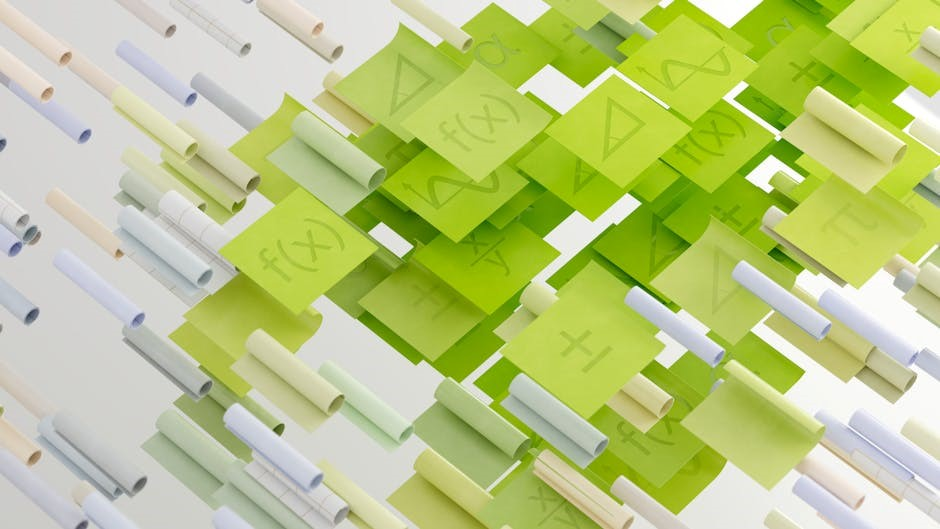This comprehensive geometry mid-year exam study guide will equip students with knowledge and strategies needed to excel in their upcoming assessment using online tools․
Overview of Geometry Concepts
Geometry concepts are fundamental to understanding the subject, including points, lines, and angles․ The study of geometry involves the analysis of shapes, sizes, and positions of objects․ Geometry concepts are used to solve problems and model real-world situations․ Students are expected to have a thorough understanding of these concepts to excel in their geometry mid-year test․ The overview of geometry concepts provides a foundation for further study and application of geometry principles․ It covers basic concepts such as points, lines, angles, and planes, as well as more complex concepts like triangles, quadrilaterals, and polygons․ Understanding these concepts is crucial for success in geometry and other math subjects․ Online resources and study guides can help students review and master geometry concepts․

Key Geometry Theorems and Postulates
Geometry theorems and postulates include fifty-four theorems and five postulates covering various topics using online study tools and resources available․
Listing of 54 Geometry Theorems and 5 Postulates
The list of geometry theorems and postulates is extensive, covering topics such as! angle relationships, parallel lines, triangles, and coordinate geometry․
The document lists 54 geometry theorems and 5 postulates, providing a comprehensive overview of the subject․
The theorems cover various aspects of geometry, including properties of lines, angles, and shapes․
The postulates provide the foundation for the theorems, establishing the basic principles of geometry․
A thorough understanding of these theorems and postulates is essential for success in geometry, and this list provides a valuable resource for students․
The list is a useful tool for reviewing and studying geometry concepts, helping students to prepare for exams and assessments․
By familiarizing themselves with the 54 geometry theorems and 5 postulates, students can develop a deep understanding of geometry and improve their problem-solving skills․
Problem-Solving Strategies
Strategies for solving geometry problems involve critical thinking and logical reasoning skills always․
Solving Equations Related to Lines, Triangles, and Angles
To solve equations related to lines, triangles, and angles, students should first identify the type of equation they are dealing with, such as linear or quadratic․ Then, they can use various techniques like graphing, substitution, or elimination to find the solution․ It is essential to understand the properties of lines, triangles, and angles, including slope, midpoint, and distance formulas․ By applying these concepts and formulas, students can solve equations and problems involving lines, triangles, and angles, which is a crucial skill for the geometry mid-year test․ Online resources and study guides can provide additional support and practice exercises to help students master this skill and achieve success on the test with confidence and accuracy always․

Geometry Formulas and Calculations
Geometry formulas and calculations involve using equations and theorems to solve problems accurately always online․
Calculating Midpoints and Coordinates
To calculate midpoints and coordinates, students use specific formulas and theorems, such as the midpoint formula, to find the exact point between two given points․ This involves using the x and y coordinates of the endpoints to determine the midpoint․ For example, to find the midpoint of a line segment with endpoints (-2, 4) and (-7, 7), students would use the midpoint formula: (x1+x2)/2, (y1+y2)/2․ By plugging in the values, they can calculate the midpoint as (-4․5, 5․5)․ This concept is crucial in geometry and is used to solve various problems, including finding the coordinates of a point that divides a line segment into a particular ratio․ Additionally, calculating midpoints and coordinates is essential in real-world applications, such as architecture and engineering․
Practical Applications of Geometry
Geometry is used in architecture, engineering, and design to create functional spaces and structures effectively always․
Real-World Examples of Geometry in Design
Geometry plays a crucial role in design, from architecture to product design, and is used to create functional and aesthetically pleasing spaces and objects․ Many companies, such as those designing solar covers for cylindrical water tanks, rely on geometric principles to optimize their designs․ The use of geometry in design can be seen in the creation of bridges, buildings, and other structures, where it is used to ensure stability and balance․ Additionally, geometry is used in the design of everyday objects, such as furniture and packaging, to create efficient and effective designs․ Overall, geometry is a fundamental aspect of design, and its applications can be seen in many real-world examples․

Test-Taking Strategies
Students should bring pencils, calculators, and review notes to the exam to ensure success in geometry mid-year test using online study tools effectively always․
What to Bring to the Exam and How to Prepare
To prepare for the geometry mid-year test, students should review their notes and study guide, and bring necessary materials such as pencils, calculators, and formulas․ It is essential to understand the exam format and content to manage time effectively․ Students can use online study tools and flashcards to memorize key terms and concepts․ Additionally, practicing sample questions and reviewing previous exams can help identify areas of improvement․ By being well-prepared and having the right materials, students can feel confident and ready to succeed in their geometry mid-year test, and achieve their academic goals with the help of online resources and study guides available․

Additional Resources
Online study tools and flashcards are available to support geometry mid-year test preparation and review․
Online Study Tools and Flashcards
Online study tools and flashcards are essential resources for students preparing for the geometry mid-year test․ These tools provide interactive lessons, practice quizzes, and flashcards to help students review and memorize key concepts․ With online study tools, students can access video tutorials, interactive diagrams, and practice problems to reinforce their understanding of geometry․ Flashcards can be used to review key terms and concepts, such as definitions of angles, lines, and shapes․ Many online resources, including Quizlet, offer a range of study tools and flashcards specifically designed for geometry students․ By utilizing these online resources, students can supplement their classroom learning and improve their overall performance on the geometry mid-year test․ Effective use of online study tools and flashcards can help students achieve academic success․